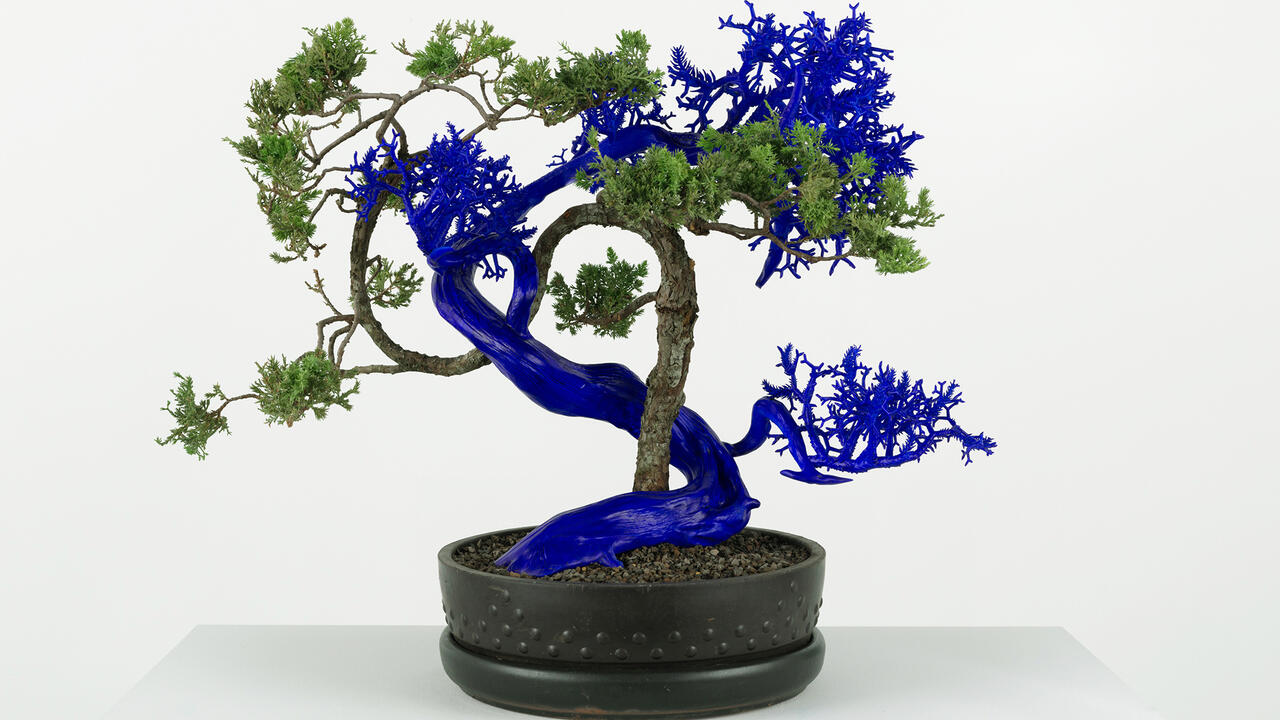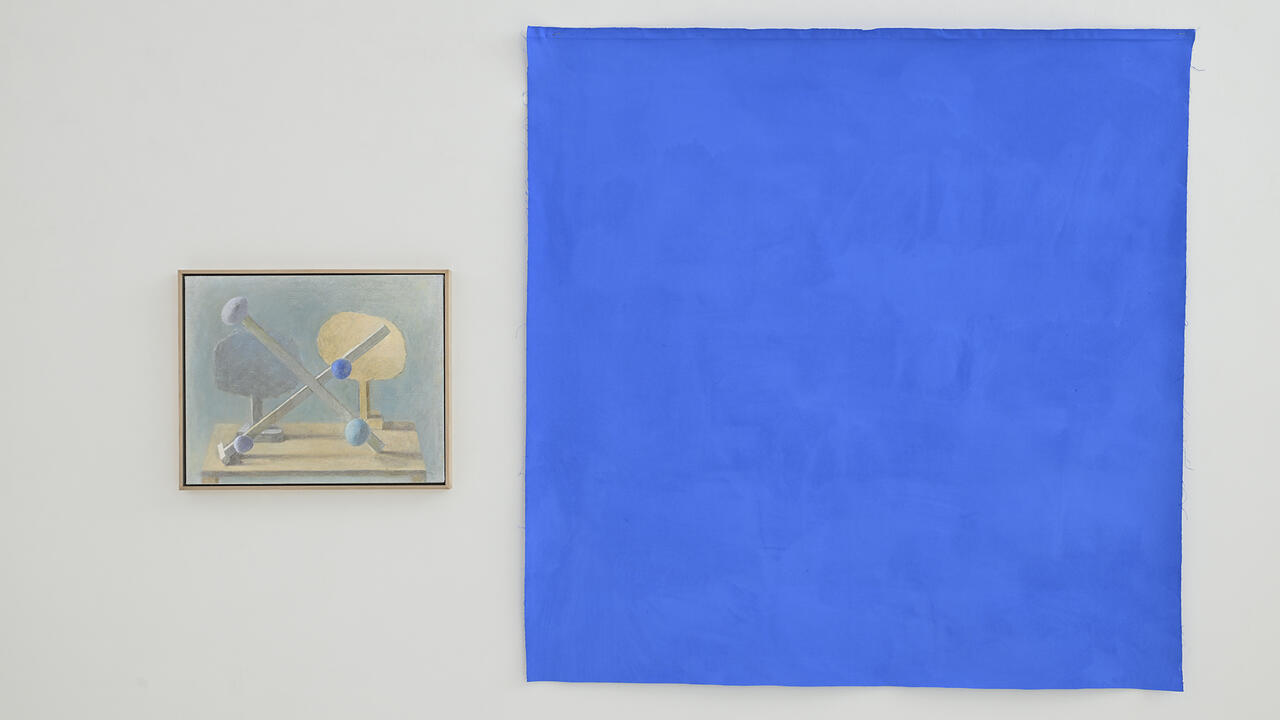The Everyday Magic of Nat Faulkner
At Brunette Coleman in London, the artist explores the materialization of invisible events through photography, reflections and altered states
At Brunette Coleman in London, the artist explores the materialization of invisible events through photography, reflections and altered states

In the afternoon, an uncanny light bathes Brunette Coleman’s small, two-room gallery in Clerkenwell. In its slight movement, the glow creates shadowy apparitions that shift from one side of the space to the other, dancing freely across the four sculptural and two photographic works in Nat Faulkner’s solo exhibition, ‘Albedo’. The title – a scientific term referring to the fraction of sunlight diffusely reflected by a body – perfectly encapsulates the interplay of reflection and transition examined within the show.

Faulkner has enclosed one-half of the gallery behind a glass partition (Interior, all works 2024). The sealed space beyond the barrier, which is held in place with a neat aluminium border, evokes an interrogation room or a laboratory: a situation of controlled investigation. Within the enclosed cell, a borrowed painting on canvas hangs on the glass’s reverse surface, its front facing the bare wall opposite. By showcasing the painting’s verso and concealing its recto, Faulkner deftly reframes our encounter with the work. Inviting us to imagine its face by drawing only from the title, Clair de lune sur la Pointe du Raz (Moonlight on the Pointe du Raz), which appears written on the back, the artist renders the painting a subject of speculation rather than of passive observation.

Elsewhere, Artificial Sun, a monochrome Chromogenic print, documents a university’s lighting simulator used by students for testing illumination on architectural models. The structured net of bulbs and cabling is reminiscent of a celestial constellation, an allusion heightened through the many inadvertent scratches, blotches and light leaks across the picture surface. The irregular edges of the image form an imperfect shape that is beautifully framed by the acrylic and plywood ground. Another Chromogenic print, Sculpture, depicts a crude armature of shining copper nestled amongst desk-based detritus. The coiled metal tubing gives the impression of an incomplete sketch or maquette. The photograph jolts slightly with a border of repetition on the crease, the lines of the nominal sculpture overlapping in a small syncopation, revealing the artist’s hand in the composition.
Three tall, narrow glass sculptural works contrast starkly with the photographic prints. Ampoule II (Champagne), Ampoule II (Nytol) and Ampoule III (Developer) contain arrangements of hand-sealed borosilicate tubes, such as those you might find in a laboratory, their titular fluids encased within. These seemingly incommensurable liquids in fact all aid the transition from one state to another: sober to inebriated, alert to asleep, etc. However, Faulkner has denied the liquids their common applications; instead, they are to be scrutinized, not consumed.

The precise and delicate nature of ‘Albedo’ instantiates a tangible basis for recognizing otherwise-elusive phenomena: situations of encounter and physical transformation. Faulkner captures these ephemeral experiences and holds them in permanent stasis. The photographs suspend time while maintaining an intriguing sense of unpredictability through the marks created in the printing process. With their fascinating properties and possibilities, the sculptural arrangements reframe unexpected materials into unusual and minimal compositions. I’m consistently reminded of the parallel curator Charlotte Cotton draws between photography and sleight-of-hand magic in her essay ‘Photography Is Magic’ (2015). Faulkner repositions the viewer while thriving on the palpable tension between the permanent and the ephemeral.
Nat Faulkner’s ‘Albedo’ is at Brunette Coleman, London, until 14 September
Main image: Nat Faulkner, Artificial Sun (detail), 2024, chromogenic print on Fuji Crystal Archive paper, optium acrylic and plywood, 120 × 90 cm. Courtesy: the artist and Brunette Coleman, London; photograph: Jack Elliot Edwards
























